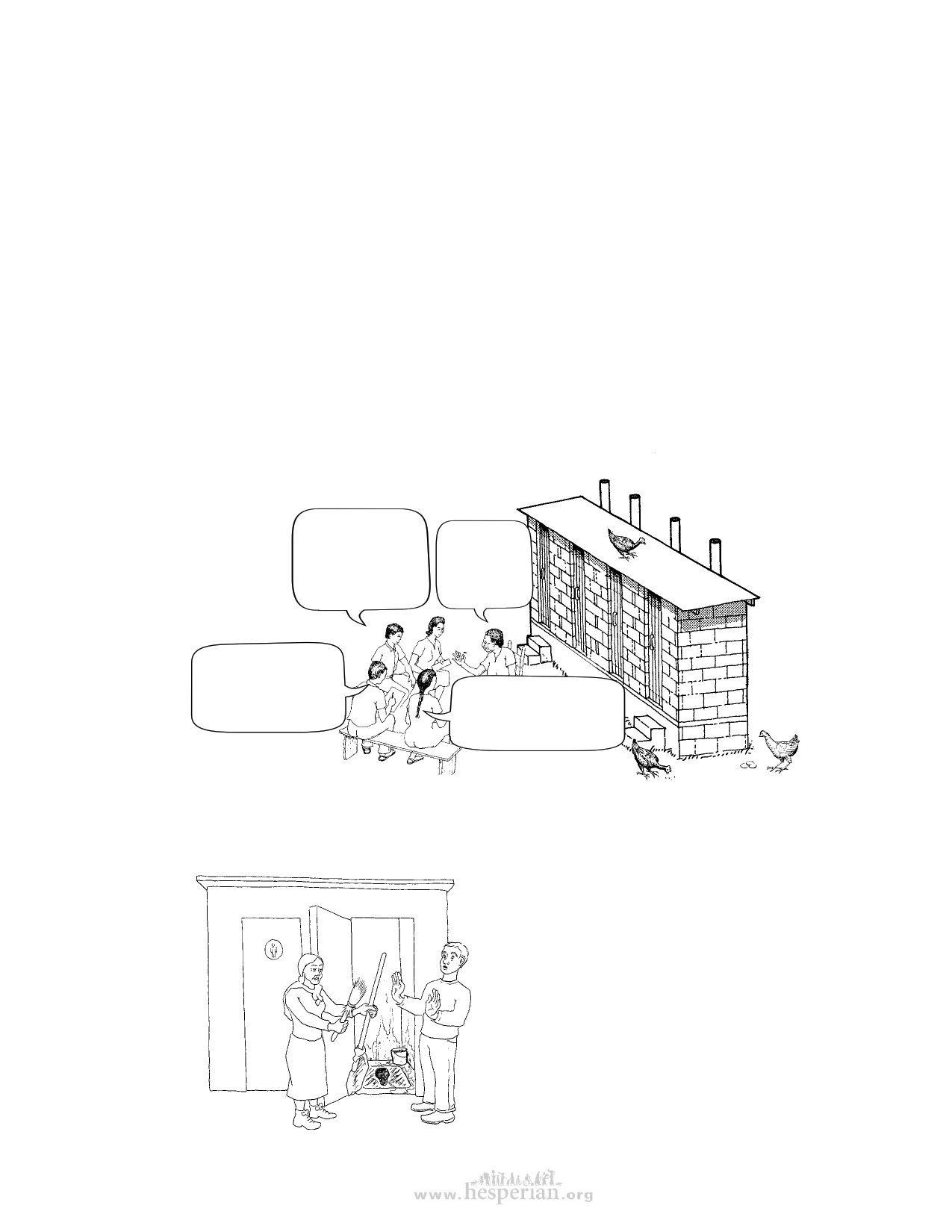
Sanitation and Cleanliness for a Healthy Environment 19
Sanitation decisions are community decisions
Because people have different sanitation needs, decisions about sanitation should
be made by the people who will be most affected by those decisions. And because
household and neighborhood sanitation decisions can affect people downstream,
communities need to work together to improve sanitation for all.
Community participation can make the difference between success and failure
when a government or outside agency plans a sanitation program. When local people
participate in sanitation planning, the result is more likely to fit local needs.
In 1992, the government of El Salvador spent over 10 million dollars to build
thousands of new toilets. The new toilets were different from the kind that local people
were used to, and needed more care and cleaning than normal toilets. There was no
training in how to use them, and the government did not invite communities to help
make them.
After the project was done, the government did a study to find out how the toilets
were being used. They learned that a large number
of the toilets were not being used well,
and many were not used at all.
Yes and no. The
toilets themselves
may have been
very good. But we
didn’t know how
to use them.
Did the
government
build the
wrong kind
of toilets?
Building a few
toilets first so people
could decide if they
wanted them would
have helped.
The government never
asked if we wanted
them and never asked
us to help make them.
Someone must clean the toilet
People have different ideas about who should clean toilets. Even in a single household,
this can be a difficult problem to resolve in a way that satisfies everyone.
Often, the job of planning, building, and
fixing toilets is considered men’s work or
work for specialists. But the less pleasant
and more constant task of cleaning toilets
often falls to women or people of lower
social classes. If tasks that are necessary
but unpleasant always fall to people with no
voice in making decisions, it is unfair. And in
the long run, it can lead to these tasks being
done poorly, or not being done at all.
Sharing unpleasant tasks is a way to
ensure that the work gets done.